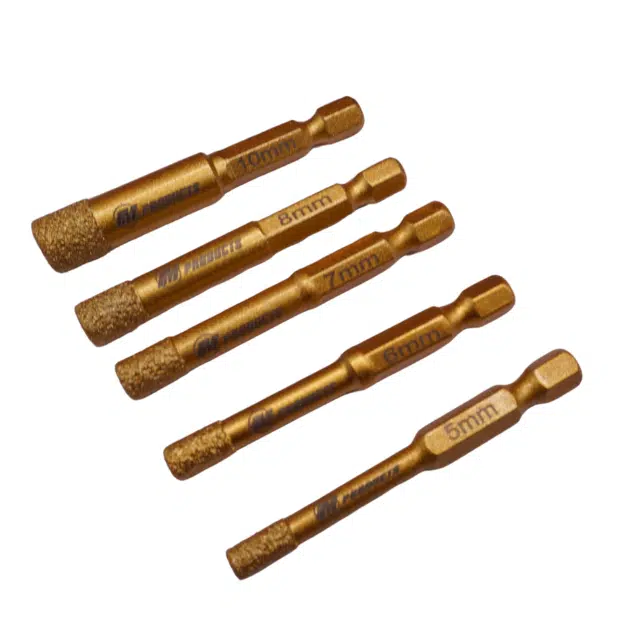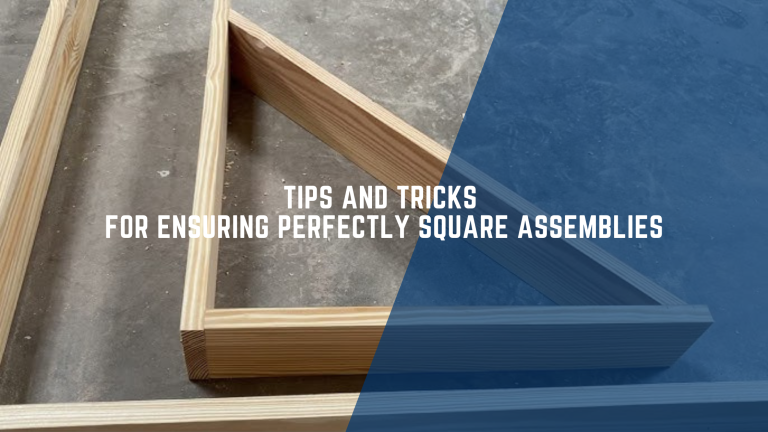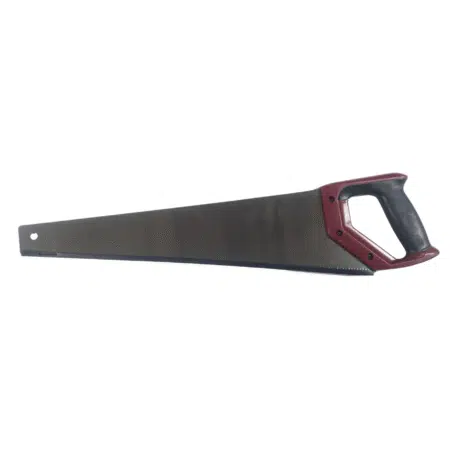Many tools exist for woodworking, but Abracs multi tool blades stand out for their versatility. You can achieve precise cuts, smooth finishes, and intricate details with these blades designed for various applications. Whether you’re chiselling, sanding, or making detailed carvings, understanding the best uses of these blades can significantly enhance your woodworking projects. This guide will explore how to maximise the potential of Abracs multi tool blades on wood, ensuring your creations are both efficient and professional.
Key Takeaways:
- Abracs multi tool blades are ideal for making precise cuts in wood, enhancing accuracy in carpentry tasks.
- The blades can effectively handle various wood types, including softwoods and hardwoods, making them versatile for different projects.
- They are designed for durability, providing long-lasting performance and reducing the frequency of blade replacements during woodworking tasks.
 Overview of Abracs Multi Tool Blades
Overview of Abracs Multi Tool Blades
Abracs multi tool blades are designed for maximum versatility and efficiency, making them an crucial addition to your toolkit. Ideal for woodwork, these blades offer precision cutting that enhances the quality of your projects. They work seamlessly with various multi-tools, ensuring that you have the right blade for every task, whether it’s for trimming, shaping, or detailed finishing work.
Features and Specifications
Abracs multi tool blades are engineered with superior materials, providing durability and longevity. They typically feature a universal fit design, allowing compatibility with multiple brands of multi-tools. Additionally, their sharpness and cutting edge technology ensure clean cuts, while minimising splintering and damage to the surrounding material.
Types of Blades Available
Abracs offers a diverse range of blades tailored for different applications. From plunge cutting and shaping to sanding and scraping, each blade serves a specific purpose. This variety enables you to select the optimal blade for your woodwork tasks, enhancing productivity and achieving professional results.
| Blade Type | Application |
| Wood Cutting Blade | Precision cutting and shaping |
| Sanding Blade | Smoothing surfaces |
| Scraping Blade | Removing paint or adhesive |
| Plunge Saw Blade | Making deep cuts in wood |
| Multi Material Blade | Versatile for various materials |
Each type of blade addresses specific requirements, enabling you to maximise your efficiency. For instance, the wood cutting blade is ideal for intricate designs, while the sanding blade is exceptional for achieving a smooth finish. By choosing the appropriate blade, you can enhance the quality of your work substantially.
- Consider your project requirements when selecting a blade to ensure optimal performance.
| Blade Material | Durability Rating |
| High Carbon Steel | Good |
| Bi-Metal | Very Good |
| Carbide-Tipped | Excellent |
| Stainless Steel | Good |
- Assume that selecting the right material can vastly improve blade longevity and cutting efficiency.
Preparing Wood for Cutting
Before cutting, ensure your wood is clean and dry. Remove any dirt, dust, or debris to prevent uneven cuts and potential blade damage. Check for knots or defects, as these can affect the quality of your finish and increase the risk of kickback during cutting. Properly securing your wood piece ensures stability, reducing movement that can lead to inaccuracies.
 Choosing the Right Blade
Choosing the Right Blade
Selecting the appropriate Abracs multi tool blade is necessary for optimal results on wood. Timber characteristics such as hardness, grain type, and thickness dictate your choice. Thin wood requires finer teeth for cleaner cuts, while thicker or hardwoods benefit from robust blades designed for tougher applications. Always consult Abracs’ guidelines for specific recommendations based on your project.
Safety Precautions
Prioritising safety when using multi tool blades is necessary. Wear protective goggles to safeguard your eyes from wood chips and debris. Securing your workpiece with clamps stabilises it, reducing the risk of accidents. Additionally, keep hands clear of cutting areas and operate tools at the correct speed to maintain control.
Using the right safety gear goes beyond just goggles and gloves; appropriate footwear can also enhance your protection. Make sure your work area is free from clutter to prevent trips and falls, and always maintain a steady stance. You should also have emergency tools within reach, such as a first aid kit, ensuring you’re prepared should anything go wrong. Engaging in regular maintenance of your tools not only contributes to their longevity but also helps in avoiding malfunctions during operation, which could lead to injuries.
Cutting Techniques with Abracs Blades
Utilising Abracs blades effectively requires mastery of various cutting techniques. Different applications may demand specific approaches, ensuring precision and efficiency across your projects. Understanding how to execute both straight and curved cuts will enhance your results and prolong the lifespan of your tools.
Straight Cuts
Straight cuts are fundamental when working with wood, and Abracs blades excel in delivering clean lines. Position your multi tool securely, and be sure to guide it steadily along your marked line. This technique is ideal for trimming, shaping, or producing consistent edges, making it indispensable for accurate work.
Curved Cuts
Curved cuts allow for more intricate designs and can transform a straightforward project into a creative masterpiece. With the right technique, you can easily navigate curves by adjusting your speed and angle of the blade. Making small adjustments as you work will help maintain control over more complex shapes.
When executing curved cuts, it’s imperative to approach them with patience and finesse. Start with a shallow depth to establish your curve, progressively deepening your cuts as you gain confidence. Using a steady hand and keeping your eyes on the desired curvature will yield impeccable results, whether you’re crafting furniture or decorative pieces. The versatility of Abracs blades makes them particularly effective for this task, accommodating various radii and angles with ease.
Finishing Touches
Once the primary cutting is complete, it’s time to focus on the finishing touches that elevate your project. This stage involves using Abracs multi-tool blades to refine and perfect the wood’s surface, ensuring it looks polished and professional. Whether you need to smooth rough edges or prepare for staining, these blades play a vital role in achieving a high-quality finish.
Smoothing Edges
Using Abracs multi-tool blades for smoothing edges is an effective way to ensure that your wood surfaces feel sleek and are free of splinters. Focusing on corners and transition points, the blades help you create clean lines that enhance the overall aesthetic of your project, which is particularly important for furniture and visible structures.
Sanding Options
Abracs multi-tool blades provide various sanding options to achieve the desired texture and appearance on wood. You can select from different grit levels to tackle surfaces needing light sanding versus those that require more aggressive material removal. This flexibility makes it easier for you to adapt your approach based on the project’s requirements and the type of wood you’re working with.
For instance, when you’re preparing a softwood surface, using finer grit blades will help achieve a silky finish, ideal for staining or sealing. In contrast, when working with hardwoods, coarser grit blades can quickly reduce material and eliminate imperfections. This versatility allows you to create tailored finishes, ensuring each piece meets your standards, whether for decorative or functional purposes.
Common Applications for Woodworking
In the context of woodworking, Abracs multi tool blades can enhance your capabilities in numerous ways. Whether you are crafting intricate designs or executing fundamental cuts, these blades adapt to your needs. They excel in trimming, shaping, and finishing wood, making them indispensable for anyone working in this field. With the right technique, you can achieve precision results, regardless of your project’s complexity.
Furniture Making
In furniture making, precision is paramount, and Abracs blades provide the accuracy required for clean cuts and intricate details. You can navigate through various hardwoods or softwoods with ease, ensuring that each joint fits perfectly. The versatility of these blades allows you to tackle everything from elegant chairs to robust tables without compromising quality.
Home Renovations
During home renovations, Abracs multi tool blades prove invaluable for cutting, shaping, and fitting wood components. Their ability to handle a range of materials allows for seamless integration of new elements into existing structures, whether updating door frames or installing new skirting boards. This adaptability helps streamline your renovation projects, saving time and enhancing the final outcome.
In home renovations, precision plays a significant role in achieving a polished finish. For instance, when replacing wooden flooring, using Abracs blades enables you to cut planks accurately, ensuring a snug fit without gaps. You can also use these blades to trim and shape wooden cabinets or shelving, making every element of your renovation cohesive and professional. Their efficiency not only elevates the craftsmanship but also reduces the likelihood of costly mistakes, making your project more enjoyable and successful.
 Maintenance and Care of Multi Tool Blades
Maintenance and Care of Multi Tool Blades
To ensure optimal performance and longevity of your multi tool blades, proper maintenance and care are important. Regular cleaning and sharpening, alongside appropriate storage, will keep your blades in peak condition and ready for any task.
Cleaning and Sharpening
After each use, clean your blades with a soft brush or cloth to remove wood shavings and debris. For deeper cleaning, use warm, soapy water and dry thoroughly afterwards. Sharpen your blades regularly with a suitable sharpening tool to maintain precise cutting edges. A well-maintained blade not only performs better but also reduces the risk of accidents.
Storage Tips
Store your multi tool blades in a dry, cool environment to prevent rust and damage. Consider using blade guards or protective cases to shield the edges. Keeping your blades organised can also save time during projects, ensuring you can quickly access the right tool. Position them in a way that avoids contact with moisture or other corrosive materials.
- Utilise blade guards or sheaths for additional protection.
- Keep blades out of direct sunlight to prevent overheating.
- Organise your blades in a toolbox or drawer, away from damp areas.
- Check periodically for signs of wear or damage.
- Any non-sharp blades should also be included in your maintenance routine.
The right storage methods can significantly extend the life of your blades. You might consider designating a specific drawer or shelf in your workshop for your multi tool blades. Using dividers can help keep different styles separate and easily identifiable. This way, you’ll always know where to find your tools when you need them.
- Label storage areas for quick identification of blade types.
- Avoid stacking tools that could cause damage to the edges.
- Conduct regular inspections to evaluate their condition.
- Use silica gel packs or moisture absorbers in storage spaces.
- Any spare blades should also be stored safely to avoid accidental damage.
Final Words
Conclusively, utilising Abracs multi-tool blades on wood allows you to achieve exceptional precision in various tasks, from slicing and trimming to shaping and sanding. Whether you’re engaged in home renovations or detailed craftwork, these blades enhance your efficiency and versatility, enabling you to tackle both simple and intricate projects with ease. By selecting the appropriate blade for your specific needs, you can optimise your workflow and elevate the quality of your craftsmanship.
FAQ
Q: What types of wood can be cut with Abracs Multi Tool Blades?
A: Abracs Multi Tool Blades are suitable for a variety of wood types including softwoods like pine and hardwoods like oak. They work effectively for both thick and thin wood materials.
Q: How do I achieve a clean cut on wood with these blades?
A: To obtain a clean cut, ensure the blade is sharp and appropriate for the task. Use a steady pace and apply consistent pressure while cutting to minimise splintering.
Q: Can I use Abracs Multi Tool Blades for flush cutting wood?
A: Yes, Abracs Multi Tool Blades are designed for flush cutting applications. Their design allows for precision cutting close to surfaces, making them ideal for trimming and finishing tasks.
Q: Are these blades compatible with all multi-tools?
A: Abracs Multi Tool Blades are compatible with most standard multi-tools available in the market. Verify the fitting specifications of your multi-tool before use.
Q: What safety precautions should I take when using these blades on wood?
A: Always wear appropriate personal protective equipment, such as safety glasses and gloves. Ensure the wood is securely clamped and keep hands clear of the cutting area during operation.


 Overview of Abracs Multi Tool Blades
Overview of Abracs Multi Tool Blades Choosing the Right Blade
Choosing the Right Blade






